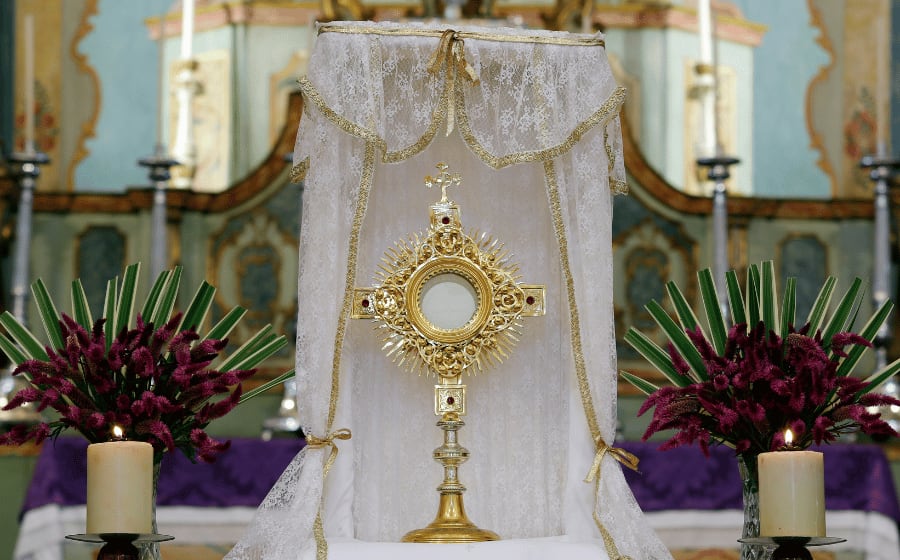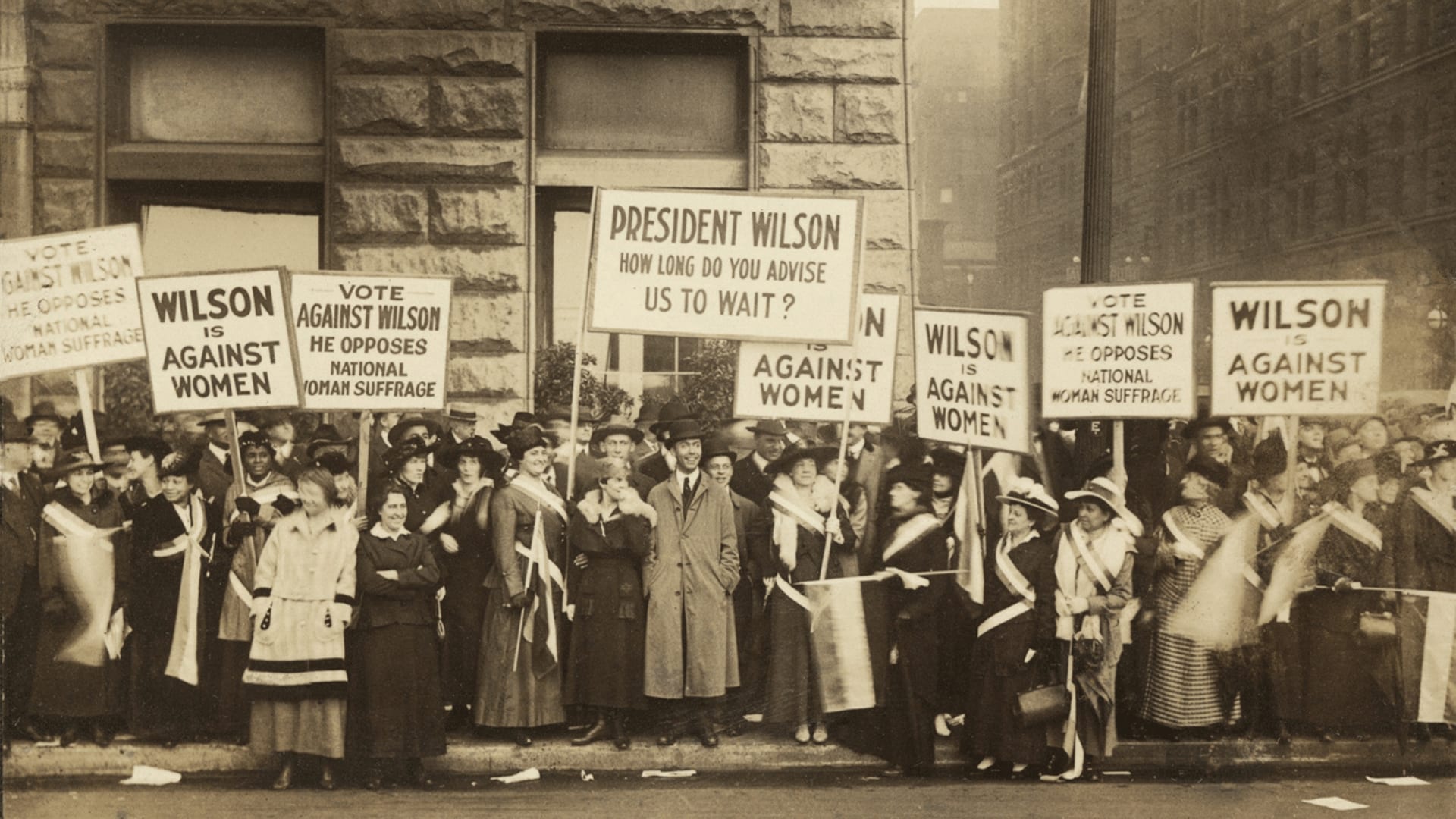Why is Easter so Special in Spain? Holyweek Customs & Best Cities
January 11, 2023
Win a FREE Trip to Spain!
Exciting Announcement! For the first time, we're thrilled to offer exclusive trips to the heart of Spain - an experience like no other. This isn't your typical tourist journey; it's a unique opportunity to immerse yourself in authentic Spanish culture, alongside real locals and our passionate team.
But there's more! Simply by requesting information about this amazing trip, you'll be entered into a special draw to win a Fully Paid Trip to Spain for Two. And that's not all - everyone who inquires will receive an exclusive bonus gift, valued at $500, available only now.
Ready to Discover the Real Spain?Click Here ↑ to Request Information & Enter the Draw!
What do you picture when you think of Easter? A bunny, hidden colorful eggs, kids running around, brunch with the family? Well, that is certainly not how the Spanish celebrate Easter. Besides, Easter, or “Pascua,” is just a day of the Holy Week. In Spain, we have a different kind of tradition that leaves people without a breath.
“I was on my tiptoes, almost containing my breath as the costaleros walked by!”. Valeria experienced that in Almeria last Holy Week, and it is precisely what most Spaniards share every year. I will tell you the full experience of that a bit later.
This guide on Easter in Spain will be helpful to know how locals experience Holy Week and what cities you should choose to visit it.
So, go ahead and get all the information on why Easter in Spain is so unique, and marvel at the unbelievable sculptures participating in the holiday.
Table of Contents ▼ ▶
Does Spain celebrate Easter?
Spain celebrates Holy Week or “Semana Santa,” and Easter Sunday marks the last day of the religious tradition.
The most important days of “Semana Santa” are the following:
- Palm Sunday: Also known as “Domingo de Ramos,” it marks the beginning of Holy Week. And, is the day that Christ entered Jerusalem on his donkey, and people saluted him with palms.
- Maundy Thursday: Also known as “Jueves Santo,” reminds people of Jesus’s last supper and the day he was apprehended by the Romans. On Maundy Thursday, Jesus gave his disciples a new commandment: to love one another as he had loved them.
“To love one another as he has loved them (John 15:12) – a love most readily seen in Jesus willingly giving up his life on the cross on Good Friday”.
- Good Friday: Also known as “Viernes Santo,” it remembers the day Jesus was condemned by the people, crucified, and buried. The term ‘good’ refers to holy, reflecting Christ’s agony on the cross.
- Easter Sunday: Also known as “Domingo de Resurección” or Resurrection Day, remembers the day that Mary Magdalene and Solome found the empty tomb of Christ.
Holy Week Traditions in Spain
Processions
As I said before, Easter in Spain is not about bunnies or colorful eggs. Holy Week is an important holiday that remembers the path of Jesus Christ before being crucified.
And how do Spaniards remember the scenes of the passions and resurrection of the Son of God? They reenact history with processions in which everyone can participate.
The stars of the Holy Week processions are the floats or “pasos” that carry life-size sculptures of Jesus and the Virgin Mary. This sculpture can date back to the 16th century and is exposed in the city’s churches during Holy Week so people can admire them.
The “pasos” can weigh between 1,500 kg and 2,000 kg. Sometimes, these figures can vary if the float includes other details such as lights, flowers, or more than one Bible character.
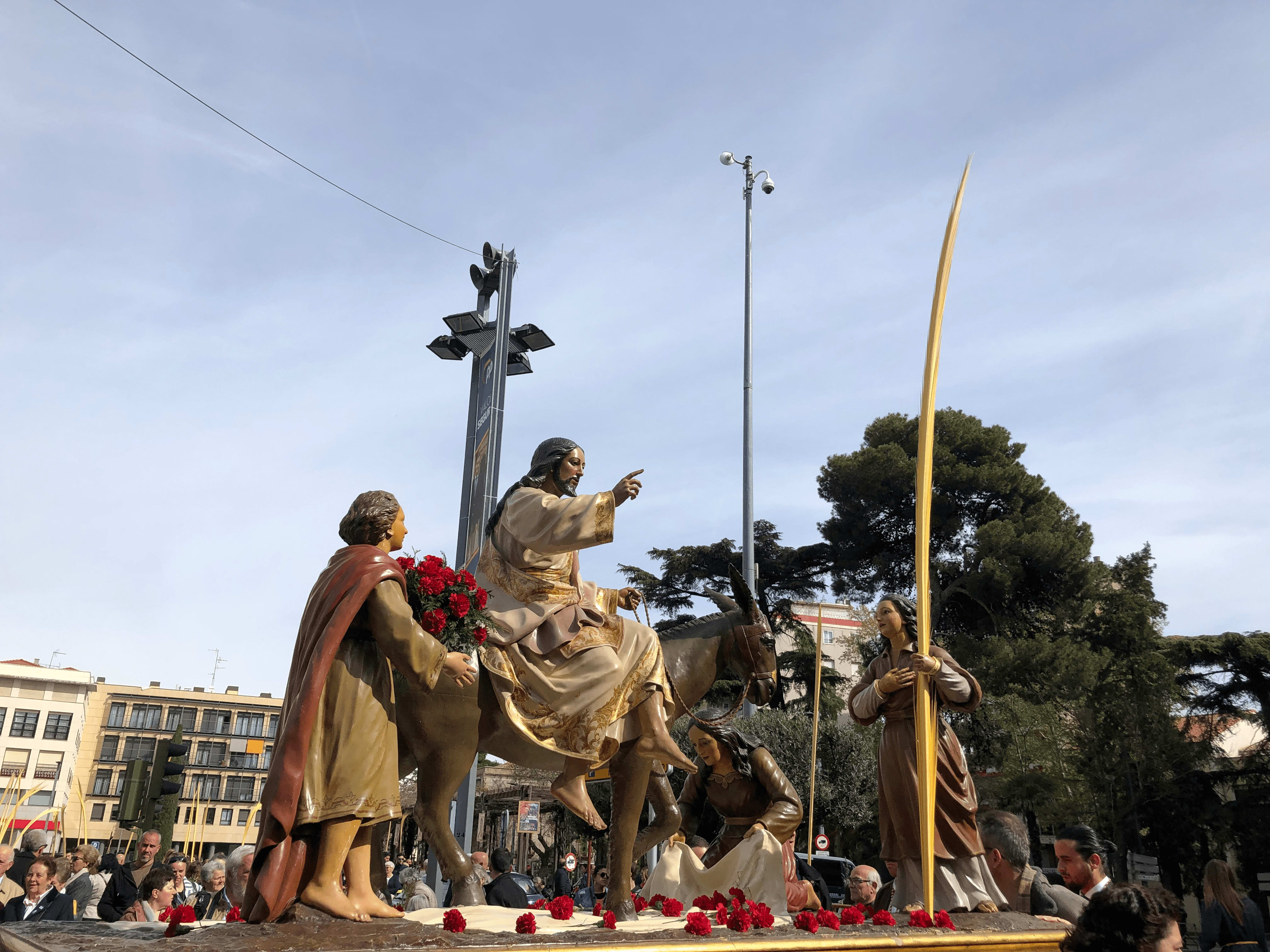
Is there a difference between one float and another? Yes! There are
1. Float of Christ: The float of Jesus Christ exclusively represents the moment of Christ’s journey to the cross. The episodes of the float must be within the last supper, crucifixion, and death.
2. Verse float: This float represents any scene from Christ’s passion with one or two more characters. The episode could be purely evangelical or the result of a devotional tradition.
3. Canopy float: Also known as “Pasos de palio,” these are specifically designed for the Virgin Mary. This float was originally made to protect the sculptures and the costaleros from the rain. However, the canopies evolved, and now they are great pieces of goldsmithing that frame the Virgin.
4. Allegorical float: Similar to the verse float, the allegorical float represents a biblical passage with allegorical figures highlighting some evangelical teaching.

Food
Every holiday has its traditional dishes, and Semana Santa is no exception.
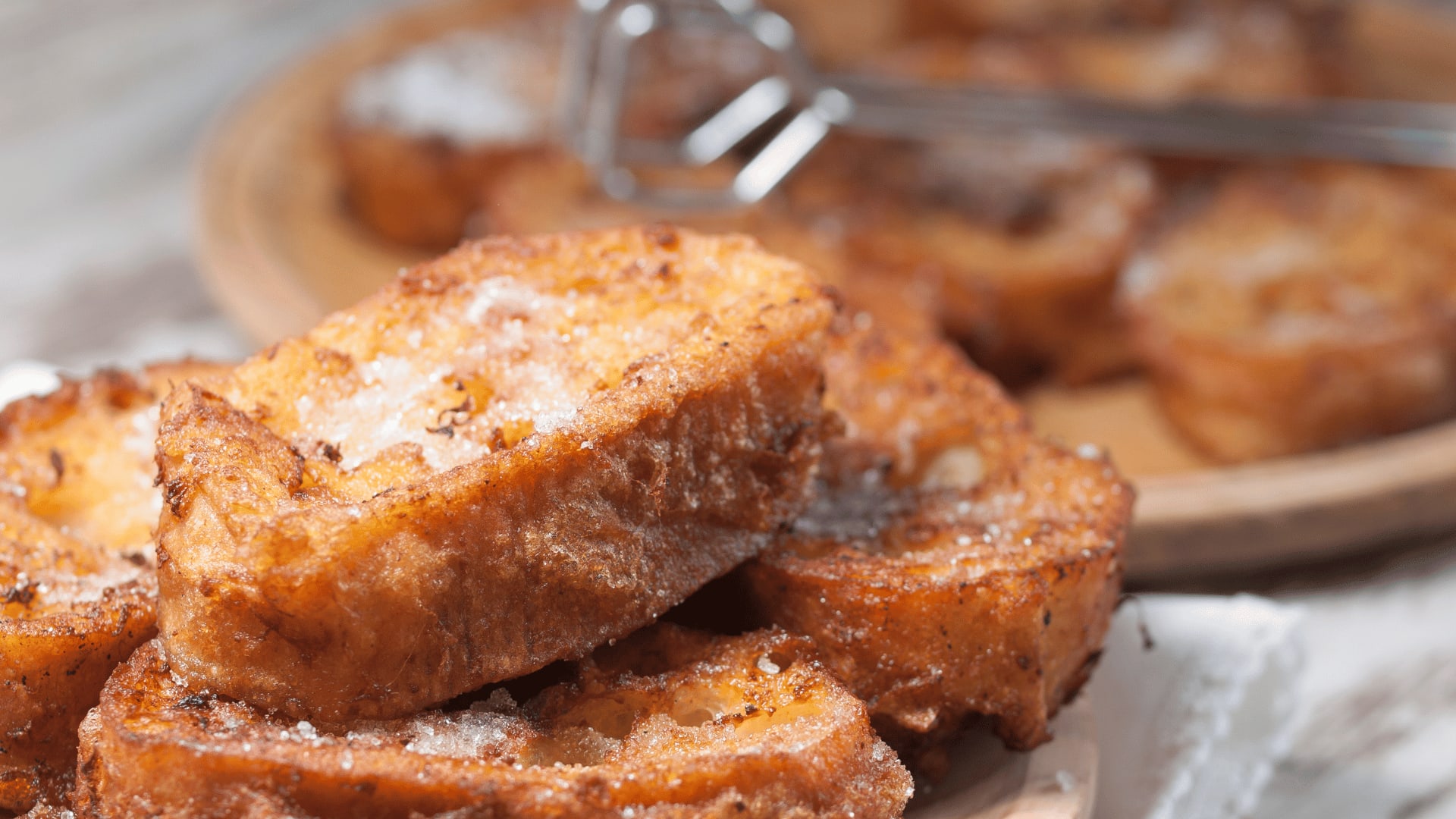
1. Torrijas
The “torrijas” were born to avoid the waste of old or hard bread. And the best way to do that is by soaking it in some milk. The recipe for this dessert is bread, egg, and milk. Once you have mixed the egg and the milk, add the bread, let it soak, and fry it in a pan. This dessert is similar to French Toast but without the fruit of honey, and you can get it from any bakery.
2. Fried Milk
This might sound weird, but believe me, it is really good. Fried milk combines flour, milk, and sugar until it thickens. Then you should fry the batter and add powdered sugar and cinnamon. This dessert is very typical in northern Spain.
3. Mona de Pascua
The “Mona de Pascua,” or the Easter bun, is a traditional bakery from Catalonia, Valencia, Murcia, and the Balearic Islands. It consists of a sweet bun with an egg in the center; the tradition was for godfathers’ or godmothers’ gifts to their godchildren on Easter Monday.
Family time
Holy Week is a time to share with family. Students usually go back home to enjoy this week with loved ones (besides preparing for exams or final projects!). More Holy Week traditions in Spain are unique to each city, so below, you will find a list of the top cities that spend Easter in Spain and experience the traditions that call you the most.
Cities to celebrate Easter in Spain
Andalusia
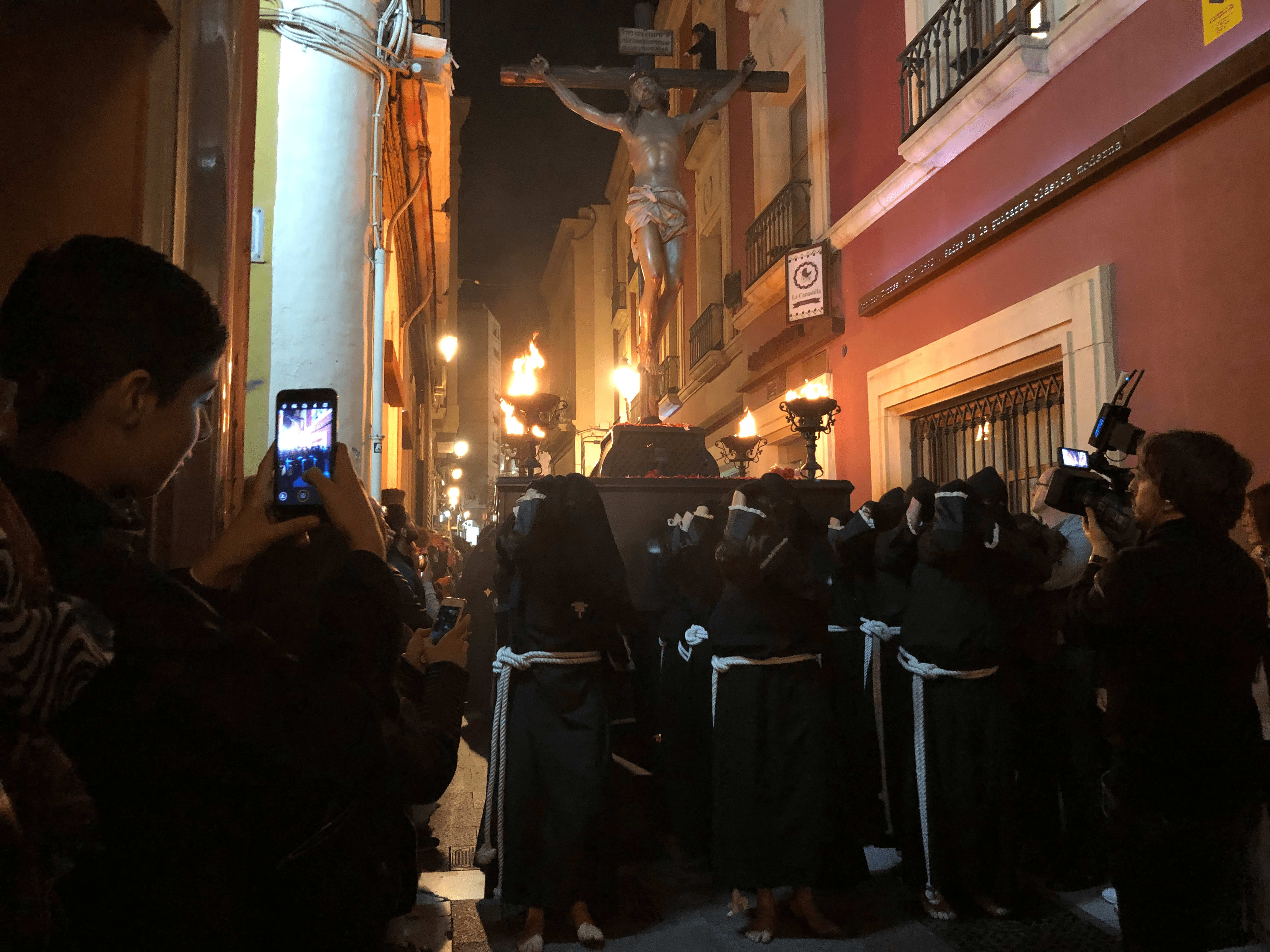
“I remember my friend telling me to be super quiet and to occupy as little space as possible! We were at calle Ricardos in Almería about to experience the procession of Jesus Christ’s crucifixion. As the float came closer, the silence grew in the street. I was on my tiptoes, almost containing my breath as the costaleros and pennantswalked by barefoot!
Suddenly a rain of red petals fell over us; it was the people from the balconies showering Christ images with roses. After that, people applauded and followed the float” - Valeria, 24 years old.
And, that is how you experience Holy Week in Spain!
Sevilla
Sevilla, the capital of Andalusia, is the most famous city to experience Holy Week. This is so much so that people book their flights and hotels months in anticipation!
If you want to experience “Semana Santa” in Seville, you will have your days fully packed with stunning landmarks and emotions. The city has a daily procession in which the ‘costaleros’ carry tons of weight on their shoulders. The pain these men feel is perceived as an honor and an act of love for the Virgin and Jesus Christ.
The most traditional procession and floats from Seville are ‘La Madruga,’ ‘La Borriquita,’ and ‘La Estrella.’
- ‘La Madrugá’ or the Early Rise is a procession that takes place at dawn, from Maundy Thursday to Good Friday. The brotherhoods are in charge of the floats and can walk for over seven hours. Specific hours are designated to the ‘pasos’ for the procession to flow better. Also, if one float meets another, the costaleros should kneel to greet each other’s float.
- ‘La Borriquita’ or the ‘Little Donkey’ is the float that represents Jesus’s entrance to Jerusalem. It’s usually the first ‘paso’ of all processions because it is lifted for the first time on Palm Sunday.
- ‘La Estrella’ o the Virgin of the Star belongs to the brotherhood of the star, founded in the 17th century. This canopy float is one of the most famous in Sevilla because the city holds a special love for Mary and is also one of the most elaborate floats of the Holy Week. ‘La Virgen de la Estrella’ parades on Palm Sunday, and when it’s night, she strolls through the streets of the old town while devouts showers her with rose petals.
Málaga
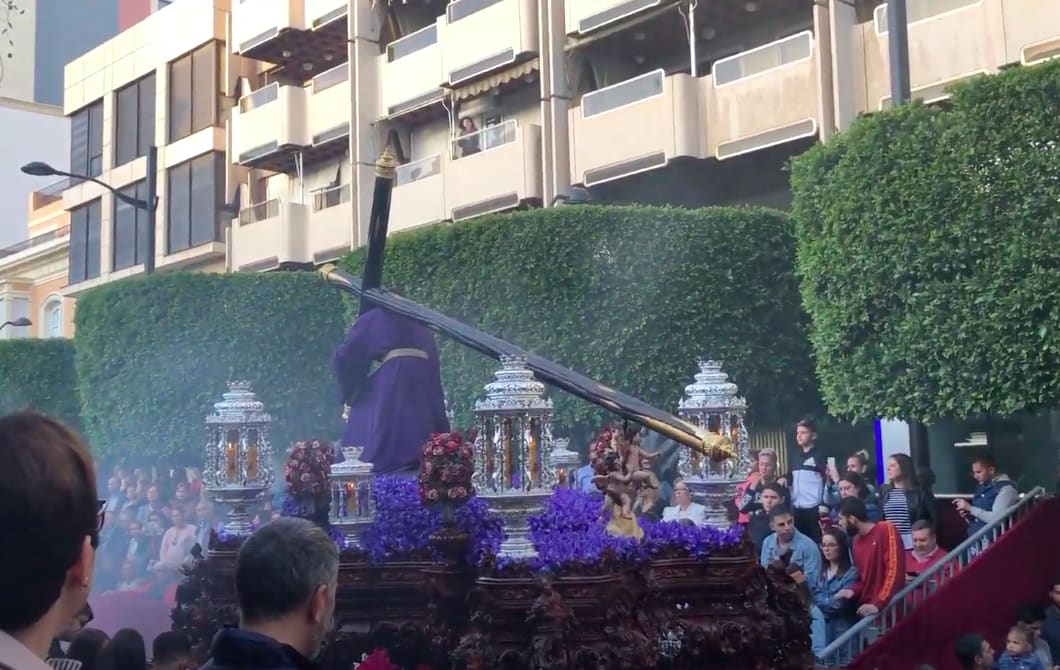
Likewise, Málaga also has impressive floats for which citizens display incredible emotion. A unique tradition in this coastal city is to free a prisoner.
Legend says that in the 18th century, king Carlos III canceled the procession of ‘El Rico’ (a float of Christ carrying the cross with a crown of thornes) due to a plague.
Some prisoners at the time requested the king for the float to make its annual parade, but he refused. The prisoners took matters into their hands, broke free from the prison, took ‘El Rico’ on its procession, and returned to prison. After that, the plague disappeared.
So, it is because of that story that Málaga has the unique tradition of letting a prisoner free and blessing him with the image of ‘El Rico.’
Castile-Leon
Zamora

Zamora is supposed to be Spain’s city with the oldest Holy Week processions. Historians say Easter has been celebrated since the 12th century when believers celebrated the first procession.
A breathtaking tradition from Zamora is the gregorian chants which happen during the nocturnal processions. Zamora is known for its elegant and sober processions; it has seventeen brotherhoods, 18 parades, and 53 floats.
The city has been recently recognized as the most beautiful Holy Week in Spain.
On Holy Week, Zamora’s population increases five times!
Valladolid
Holy Week traditions in Valladolid date back to the 15th century, but it was in the 20th century that processions settled and attracted more people.
Unlike ‘Semana Santa’ in Andalusia, the celebrations in Valladolid are known for their elegance. In this city, you won’t experience the sudden song from a flamenco singer who was moved by the Virgin. In Valladolid, you will experience silence, devotion, and sobriety. A tradition from the city is to Sermon of 7 Words and theatrical performances throughout the week.
Easter in Spain is a religious celebration that the Spanish take seriously. It is celebrated throughout an entire week in which people remember the sufferings of Jesus and his mother, the Virgin Mary.
Anywhere you go, you will find processions in the street and people praying and honoring their beliefs. Andalusia and Castile-Leon are the most iconic autonomous regions to experience Holy Week in Spain.
‘Semena Santa’ is a beautiful celebration that can immerse anyone into one part of the Spanish culture.
If you have any doubts or need advice on visiting during Easter, we will be happy to hear from you!



